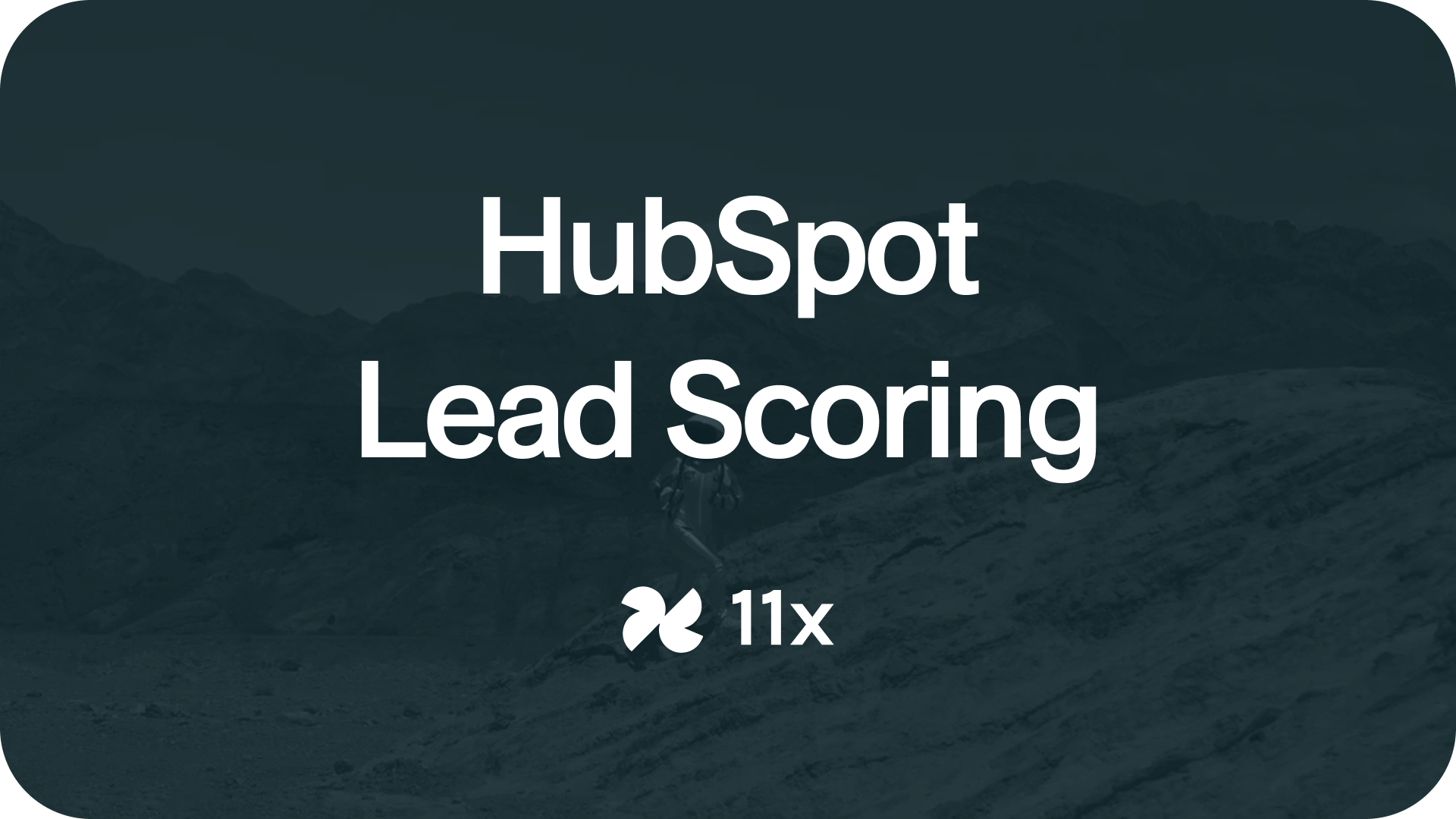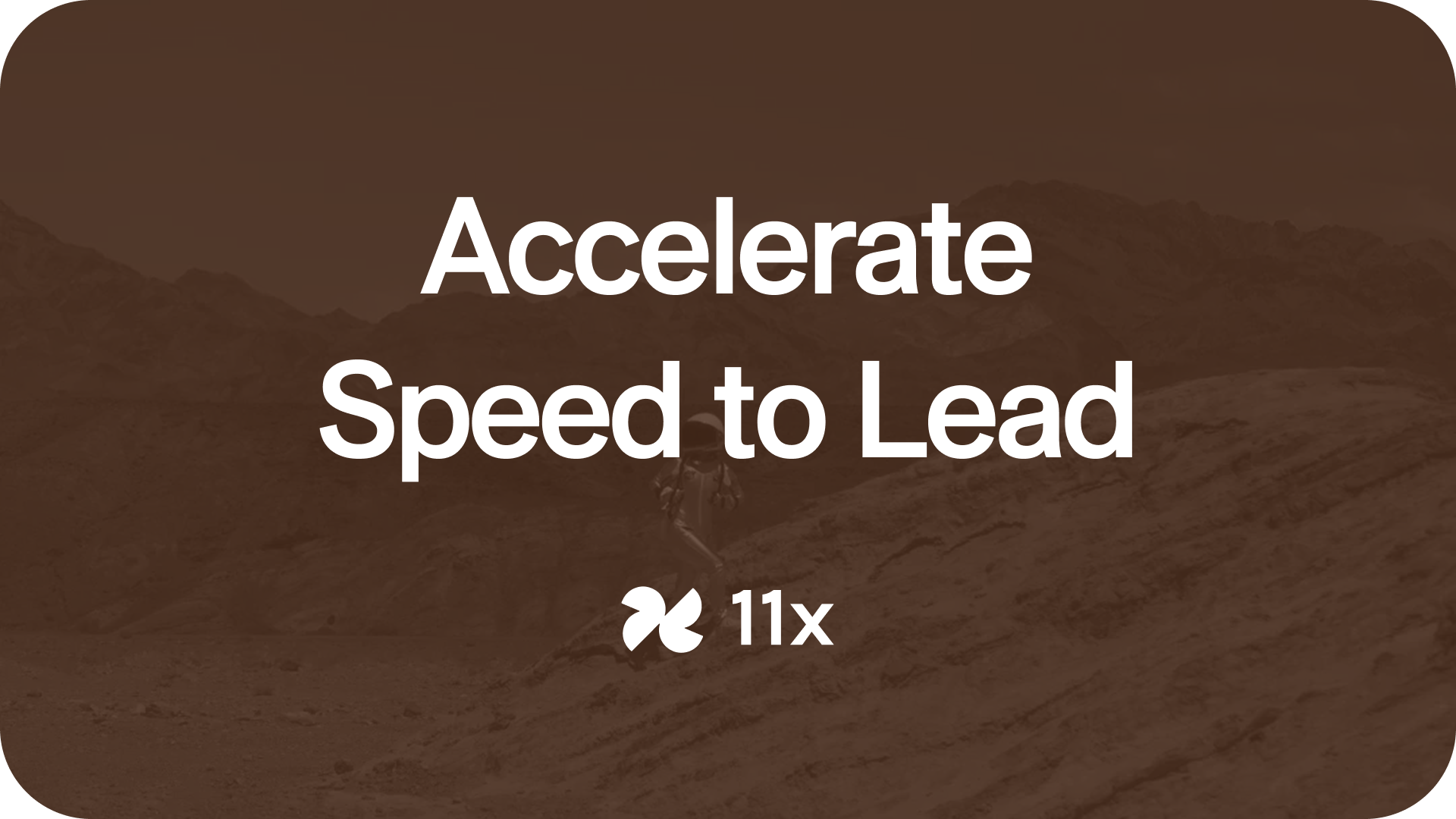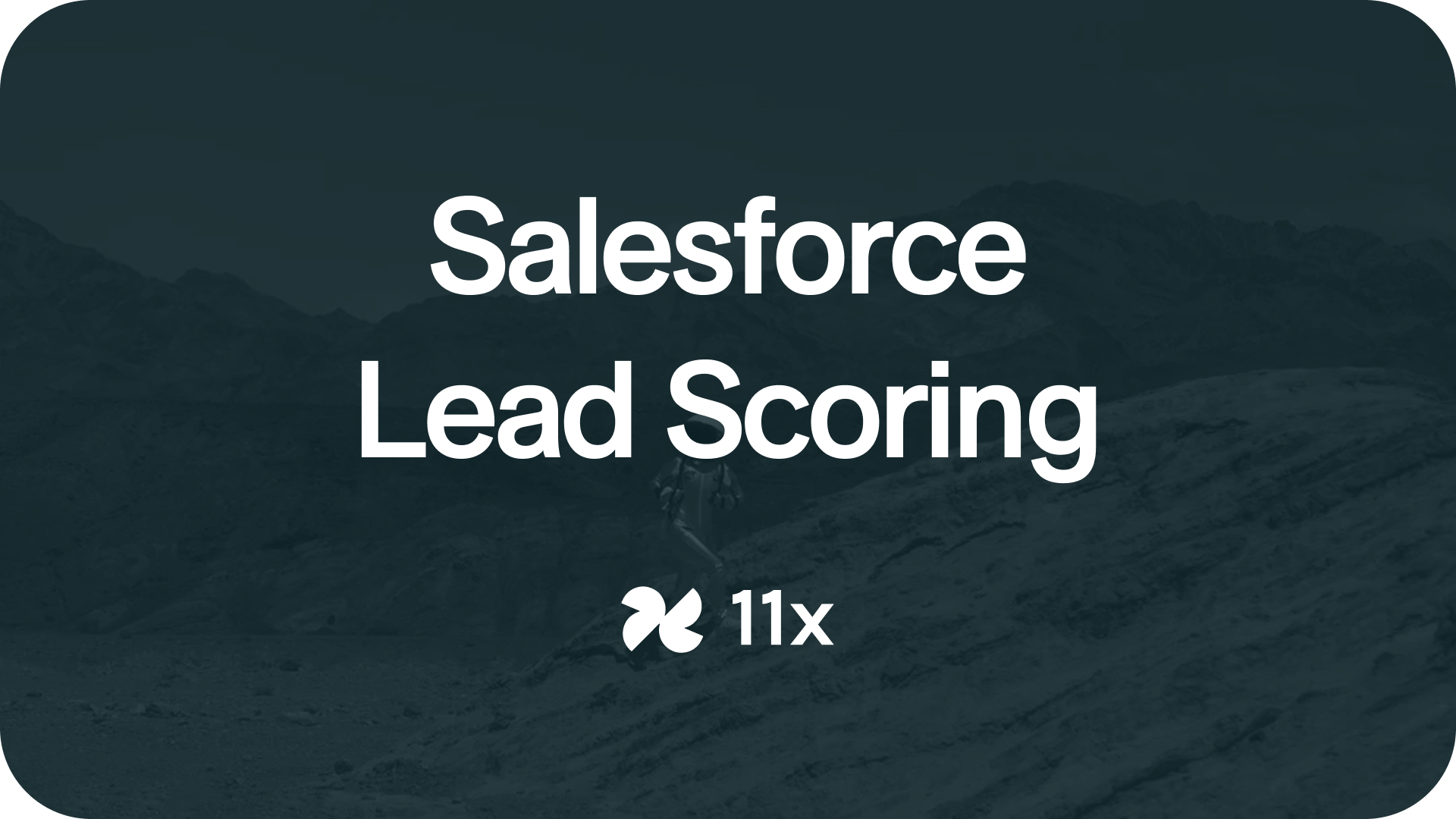The 11 Best AI Email Outreach Tools for 2025
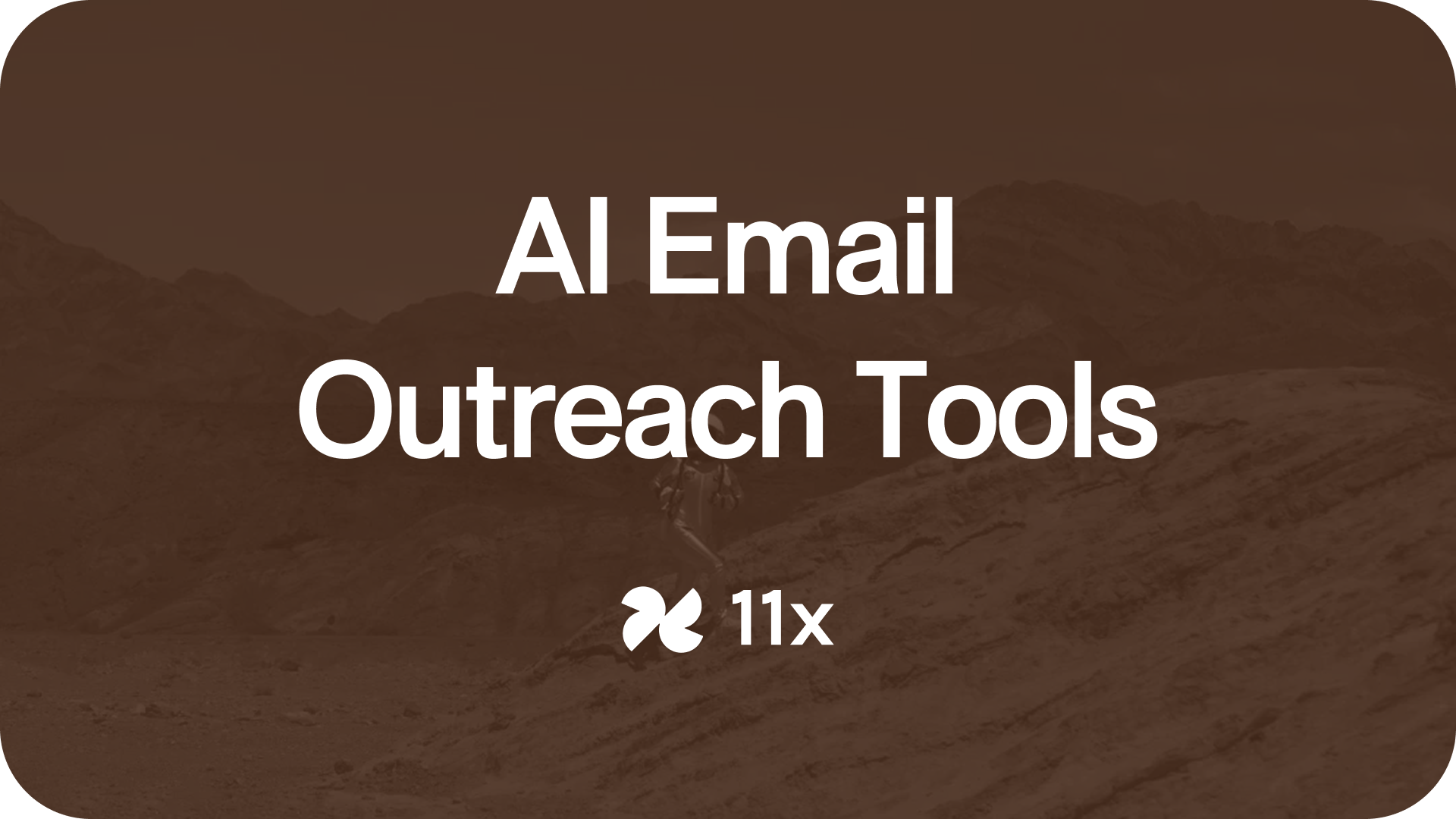
AI has transformed how B2B sales teams engage with prospects. The traditional process of researching leads, crafting cold email outreach, and managing campaigns manually has been replaced by intelligent systems that adapt, learn, and execute at scale. Modern AI tools now handle everything from data collection to message delivery, operating continuously and improving with every interaction.
These tools redefine effective outreach. They combine live data, personalization, and delivery intelligence to reach real buyers at the right time. A strong email platform reads signals, protects deliverability, and improves with every send.
This guide reviews the leading AI outreach platforms of 2025, starting with 11x, which shows how data, personalization, and automation now work together to power modern email outreach.
Why AI Email Outreach Matters for B2B Sales Teams
Cold outreach used to run on volume. Reps built mail merges, dropped names into templates, and hit send. That rhythm worked for a while, but not anymore. Buyers now spot automation instantly, and it turns them off fast.
The numbers confirm the shift. The average reply rate for B2B cold campaigns has dropped to just 5 to 9 percent, and open rates have fallen from 36%to 27.7%. Deliverability has also become a growing constraint, with roughly 20 percent of commercial emails filtered as spam due to low engagement.
Modern AI outreach tools are changing that dynamic. They read real market triggers, funding rounds, title changes, product launches, even social engagement, to identify when someone is actually in-market. Instead of blasting broad lists, they time outreach precisely, matching tone and context to the buyer’s moment.
This new level of intelligence is why traditional cold email has plateaued while AI‑driven outreach is driving measurable gains in open rates, deliverability, and deal conversion.
Why Traditional Cold Email Falls Short
Volume has replaced relevance, damaging both sender credibility and inbox placement.
Most teams continue using static templates instead of contextual data.
B2B buyers now demand personalization similar to what they receive as consumers, with 75 percent expecting tailored experiences by 2026 (Forrester Research, 2025).
Even well-managed outreach programs plateau because the message fails to match the moment.
How AI Transforms Outreach Performance
AI-driven workflows redefine personalization. Instead of generic sequences, AI integrates CRM activity, firmographics, behavior analytics, and real-time triggers to produce messages that sound individual and natural. According to Forrester and SuperAGI’s 2025 study, companies using AI personalization report 35 percent higher conversions, 50 percent more qualified leads, and up to 83 percent identifying AI as a top sales priority.
AI delivers two core advantages: human-like tone modeling and continuous optimization. Every send becomes a feedback loop for what language, subject lines, and offers get results.
The Psychology Behind AI Personalization
The science behind AI-backed personalization is rooted in cognitive response. Research in Computers in Human Behavior (April 2025) shows that personalized digital communication enhances trust by increasing perceived relevance. When timing, tone, and purpose align with the receiver’s expectations, mental friction drops, improving engagement probability.
Studies in Advances in Consumer Research (September 2025) demonstrate that transparency combined with emotional calibration drives long-term trust. Over-automation without empathy triggers resistance, but adaptive tone systems reverse that effect. Software such as AI SDRs and AI email copilots now use sentiment detection to dynamically shift tone, referencing details from job titles to recent company events to maintain conversational credibility.
Quantifiable Gains
The gap between manual and AI-assisted outreach continues to widen. Personalized emails generate six times more transactions and 41% higher click-throughs. Multi-channel AI outreach combining email with LinkedIn achieves response rates nearly three times greater than single-channel efforts. Companies using AI-driven personalization report a 20-25% lift in marketing ROI, and conversion rates almost double previous benchmarks.
Real-Time Learning and Optimization
Unlike older sequencing tools, modern AI systems analyze reply sentiment, engagement timing, and message framing after every send. They adjust sequences automatically, optimizing call-to-action phrasing, cadence intervals, and tone. 11x’s Alice uses CRM-linked data to trigger outreach related to real-time prospect actions. Across enterprise use cases, this has delivered 10 to 15 percent productivity gains and 50 percent more SQLs (Salesforge, 2025).
The 11x Approach
11x digital workers combine contextual intelligence with autonomous personalization across both outbound and inbound motions. Alice, the AI SDR, manages outbound by tracking market signals, enriching lead data, and launching tailored sequences across email and LinkedIn to turn new prospects into opportunities. Julian, the AI Phone Agent, manages inbound by qualifying leads in real time, following up on web inquiries, and reengaging past conversations through phone and text. Together, they adapt every interaction using live data and trigger systems, aligning tone, timing, and message to every prospect.
The result is scalable outreach that sounds human and evolves constantly. Multi-channel cadences run across email, phone, LinkedIn, and chat while AI learns from outcomes to lift reply quality, readiness, and conversion velocity.
AI outreach is no longer about sending thousands of messages but sending precisely the right one at the right time.
What to Look for in an AI Outreach Tool
The best AI tools integrate multiple layers of execution and data coordination. Look for platforms that:
- Combine lead enrichment with live database updates.
- Include email warmup and strong email deliverability monitoring.
- Automate personalized follow-up emails using behavioral triggers.
- Support CRM and Zapier connectivity to streamline pipelines.
- Provide intuitive functionality, transparent credit card management, and clear pricing tiers.
- Maintain scalable email marketing output with proper domain rotation.
Teams that evaluate tools through these lenses reduce technical friction and maximize continuity across outreach workflows.
The Leading AI Email Outreach Platforms of 2025
The following breakdown profiles the eleven most effective platforms in 2025. Each listing details how the product works, its unique advantages and potential trade‑offs, and which type of organization it fits best. Together, these tools represent the full spectrum of what modern AI email outreach can deliver, from real‑time intent capture to multilingual personalization and autonomous campaign optimization.
11x
- Core Strength: All-in-one AI outreach with deep data and deliverability tools
- Key Pros: Enterprise-grade data, great deliverability, real-time triggers
- Key Cons: Complex setup for small teams
- Best Fit: Mid-market & enterprise GTM orgs
Persana
- Core Strength: Real-time, signal-based outreach
- Key Pros: Fast, data-driven, multi-channel
- Key Cons: Template-style personalization
- Best Fit: Outbound teams using intent data
Reply.io
- Core Strength: Multi-channel automation with AI SDR
- Key Pros: Full automation across channels, easy CRM sync
- Key Cons: Needs external enrichment
- Best Fit: Growing sales teams & agencies
Outreach.io
- Core Strength: Enterprise engagement & pipeline analytics
- Key Pros: Deep CRM tie-in, strong analytics
- Key Cons: Longer setup, structured personalization
- Best Fit: Enterprise sales orgs
Instantly.ai
- Core Strength: High-volume cold email & deliverability
- Key Pros: Scalable, simple, reliable deliverability
- Key Cons: Limited personalization
- Best Fit: Agencies & freelancers
Klenty
- Core Strength: Multi-channel + built-in dialers
- Key Pros: Voice integration, solid analytics
- Key Cons: Complex UI for small teams
- Best Fit: SDR teams using phone + email
Saleshandy
- Core Strength: Deliverability-focused cold email
- Key Pros: Strong inbox health tracking
- Key Cons: Email-only, low personalization
- Best Fit: Teams managing multiple domains
Lemlist
- Core Strength: Visual & multilingual personalization
- Key Pros: Engaging visuals, global reach
- Key Cons: Limited scale & data depth
- Best Fit: Creative or global sales teams
Apollo.io
- Core Strength: B2B data + outreach combo
- Key Pros: Large verified database, easy setup
- Key Cons: Basic personalization
- Best Fit: Small teams & founders
Salesloft
- Core Strength: Structured outreach & coaching
- Key Pros: Excellent analytics, scalable
- Key Cons: Slower implementation
- Best Fit: Enterprise SDR & RevOps teams
Alta
- Core Strength: Modular AI sales agents
- Key Pros: Highly flexible & integrable
- Key Cons: Needs technical oversight
- Best Fit: Enterprise RevOps/system teams
1. 11x The All‑in‑One AI Outreach Platform
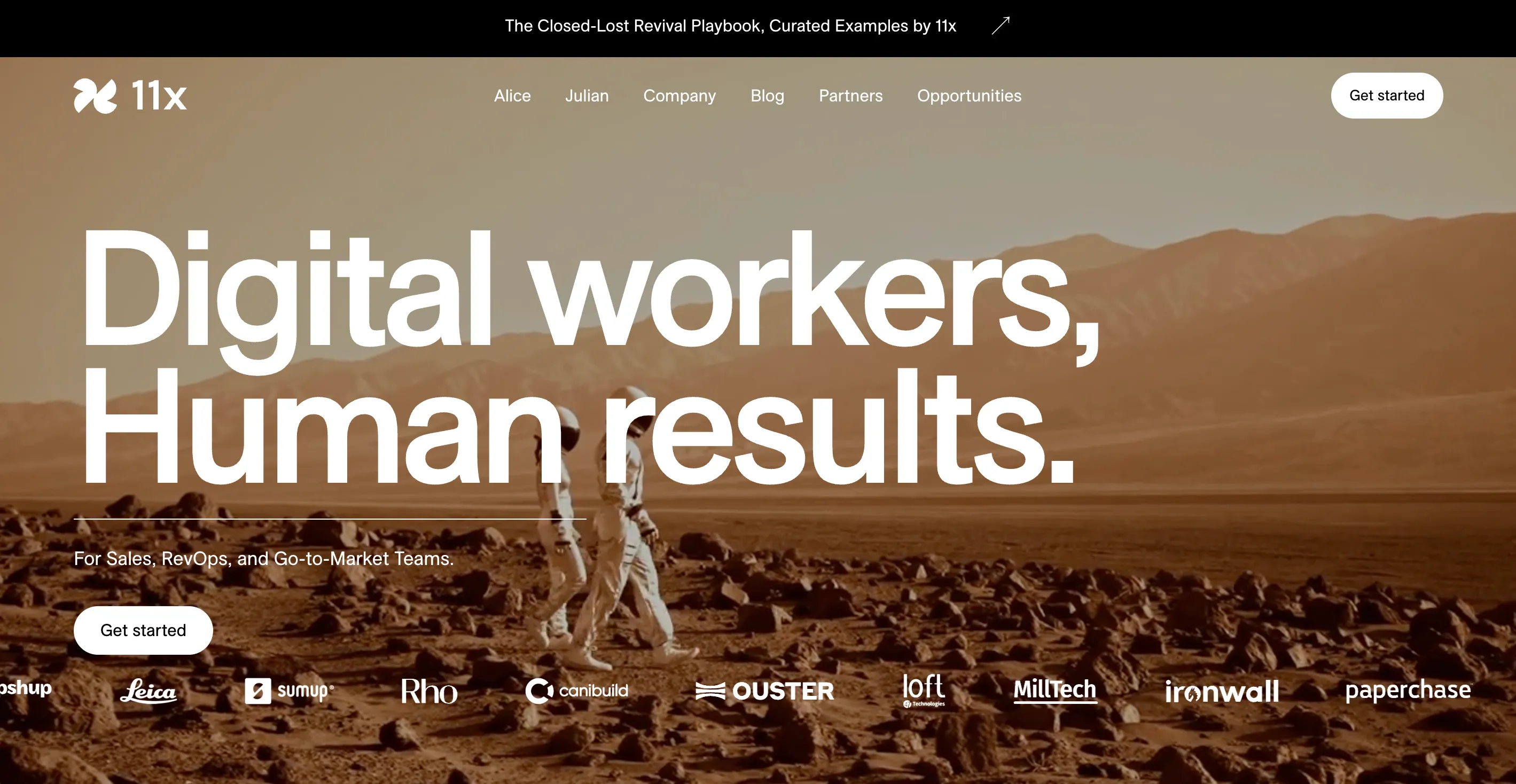
11x connects 21 premium data sources, tracking job changes, funding events, and technology updates to pinpoint prospects showing buying intent. It merges lead database, enrichment, AI-generated personalization, and automated sending in one environment. Built‑in email warmup, inbox rotation, and anti‑spam layers secure deliverability at scale.
Pros: Enterprise‑grade data quality, exceptional deliverability, and continuous optimization based on real‑time triggers. Its AI agents Alice and Julian personalize tone across email, LinkedIn, and calls, replacing several disconnected outreach tools.
Cons: The extensive functionality can be more than small teams require, and implementation may need guided support.
Best fit: Mid‑market and enterprise GTM organizations replacing multiple outreach tools with a single platform.
2. Persana Real‑Time Signal‑Based Outreach

Persana is a trigger‑based ai outreach platform that reacts instantly to buying signals. It tracks more than seventy data points—from website visits and product searches to funding news and title changes—and uses this data to launch outreach sequences when interest peaks. By merging signal tracking with multi‑channel delivery, Persana helps teams connect with decision‑makers at the right time across email and LinkedIn. CRM syncing keeps prospect data current while reducing the manual work of lead scoring or scheduling.
Pros: Extensive signal coverage and timing accuracy make outreach highly responsive. Combining enrichment and automated follow‑ups in one system removes the need for multiple tools.
Cons: Personalization is more template‑driven than adaptive. Inbound handling remains limited, so teams managing inbound leads may need complementary tools.
Best fit: Outbound sales teams and agencies that rely on intent data to reach high‑fit buyers early and want speed to lead without heavy customization.
3. Reply.io Multi‑Channel Outreach Powered by Jason AI
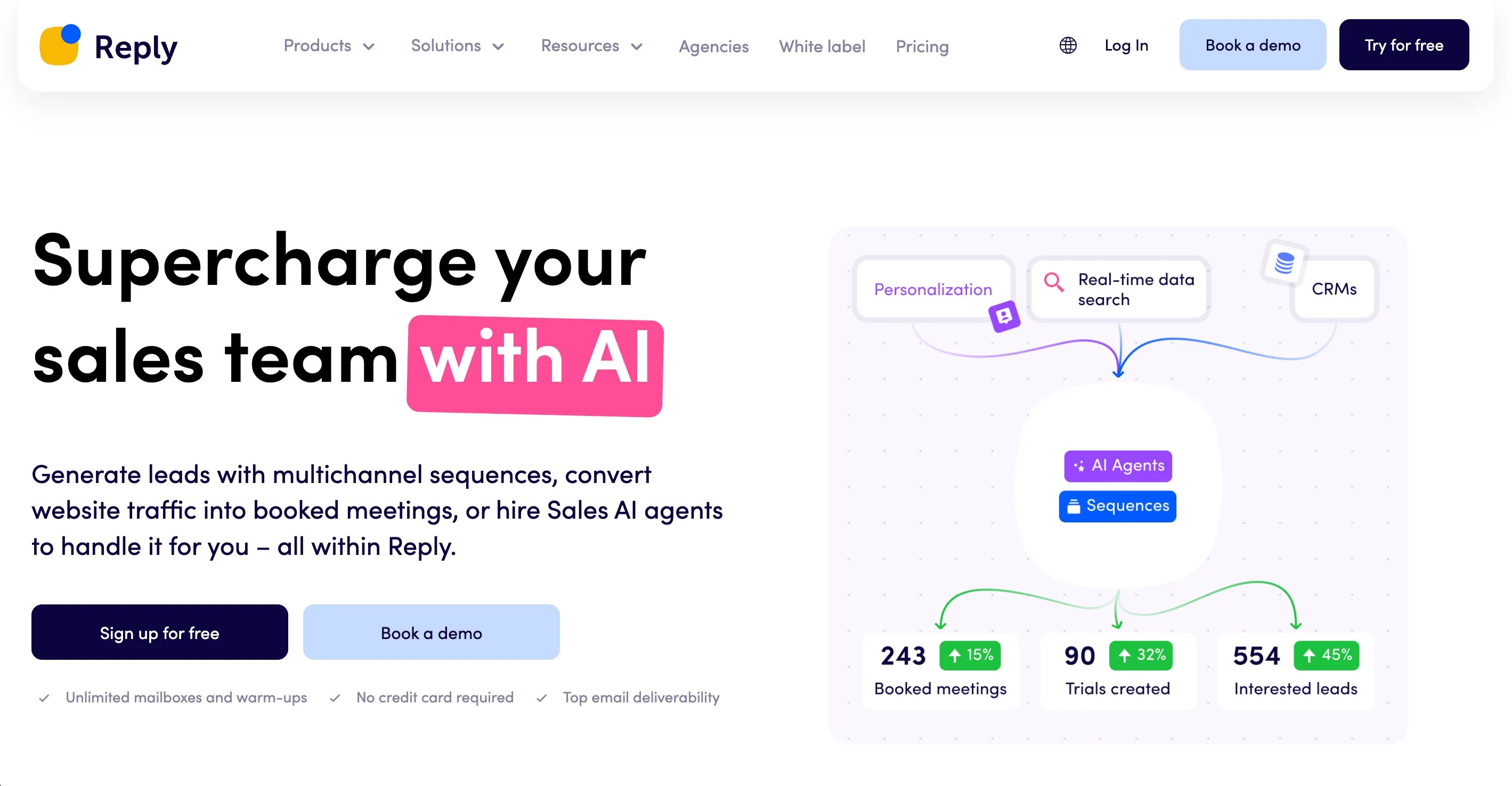
Reply.io automates communication across email, LinkedIn, SMS, and WhatsApp. Its virtual SDR, Jason AI, writes and launches sequences, analyzes engagement, and books meetings automatically. Messages evolve in tone and timing based on prior replies and intent signals. Integration with Salesforce, HubSpot, and Pipedrive ensures every touchpoint syncs cleanly. Deliverability checks run continuously, so campaigns avoid spam triggers while maintaining volume.
Pros: Reliable multi‑channel orchestration, built‑in meeting automation, and clear analytics dashboards enhance SDR efficiency. Jason AI manages routine replies and keeps CRMs updated automatically.
Cons: Requires outside enrichment for advanced research. AI tone control is less nuanced for complex or technical industries.
Best fit: Sales teams and agencies needing multi‑channel reach and consistent automation to scale outreach without adding SDR headcount.
4. Outreach.io Enterprise Sales Engagement and Pipeline Intelligence

Outreach.io combines engagement sequencing with deal intelligence for large sales teams. It defines repeatable cadences across channels and tracks what actions move deals forward. Smart Email Assist drafts responses using past interaction data and pipeline context. Smart Deal Assist then forecasts deal health and suggests next steps based on analytics. Managers use these insights to coach reps and keep activities aligned with revenue goals.
Pros: Deep CRM integration, extensive analytics visibility, and proven enterprise scalability make it dependable for complex GTM teams.
Cons: Setup and implementation can be lengthy. Personalization options are structured rather than adaptive, limiting creative flexibility.
Best fit: Enterprise and upper mid‑market sales organizations that need structured engagement, forecasting, and pipeline transparency.
5. Instantly.ai High‑Volume Email and Deliverability Automation
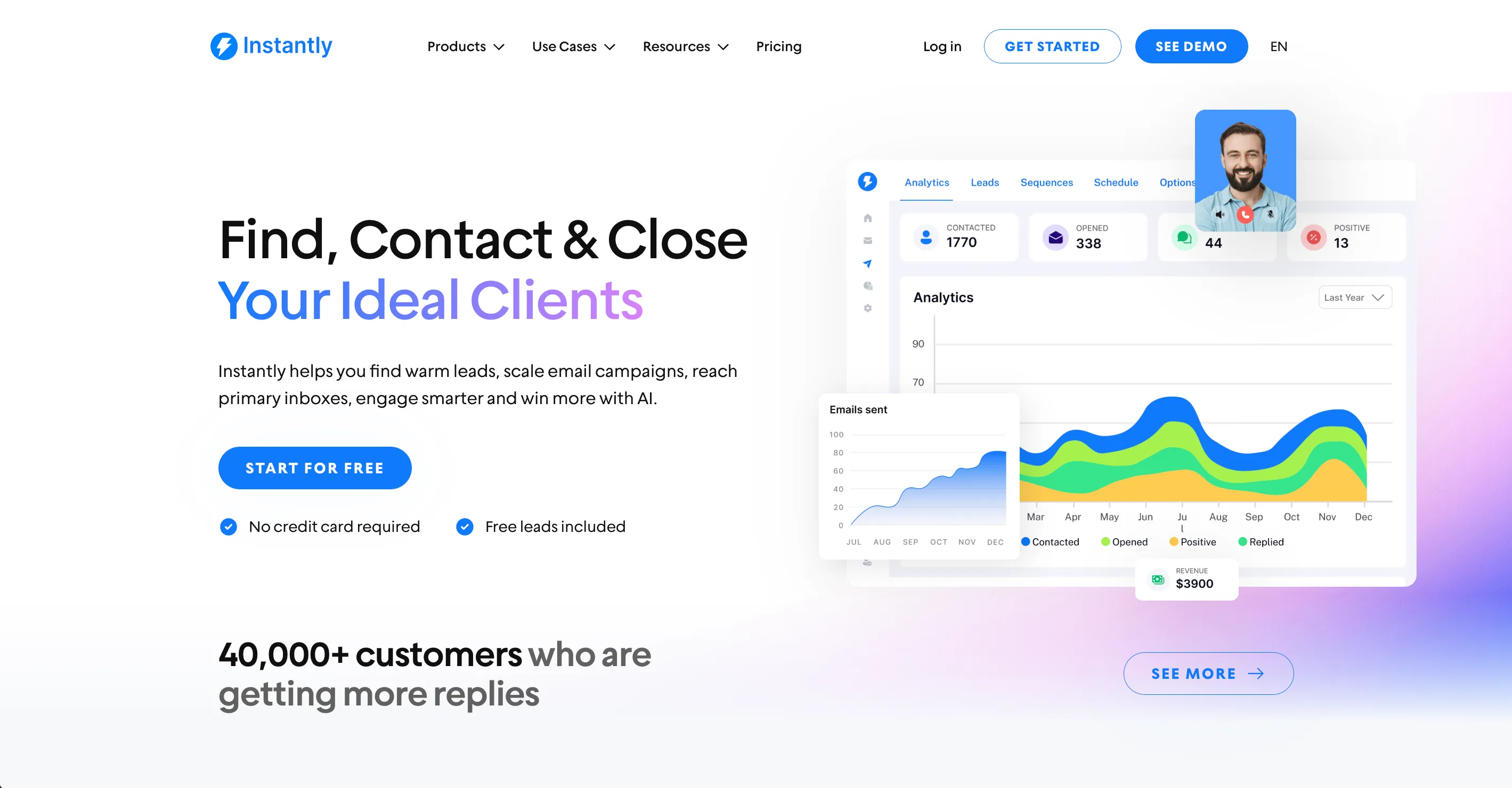
Instantly.ai streamlines cold email campaigns at scale. It automates domain warmup, inbox rotation, and deliverability testing so high‑volume senders maintain strong reputation. Its AI generator produces complete sequences from user prompts and optimizes send cadence using engagement history. Built‑in spam testing and bounce detection prevent list decay. Instantly also handles basic reply categorization and performance tracking for faster iteration on messaging.
Pros: Outstanding scalability and sender reputation control. Simple UI for managing dozens of domains and inboxes. Reliable reporting around bounce and delivery metrics.
Cons: Limited personalization depth and no built‑in enrichment or social channel execution.
Best fit: Agencies, freelancers, and outbound teams running large‑scale cold email where deliverability and throughput matter more than deep customization.
6. Klenty Multi‑Channel Outreach with Built‑In Dialers
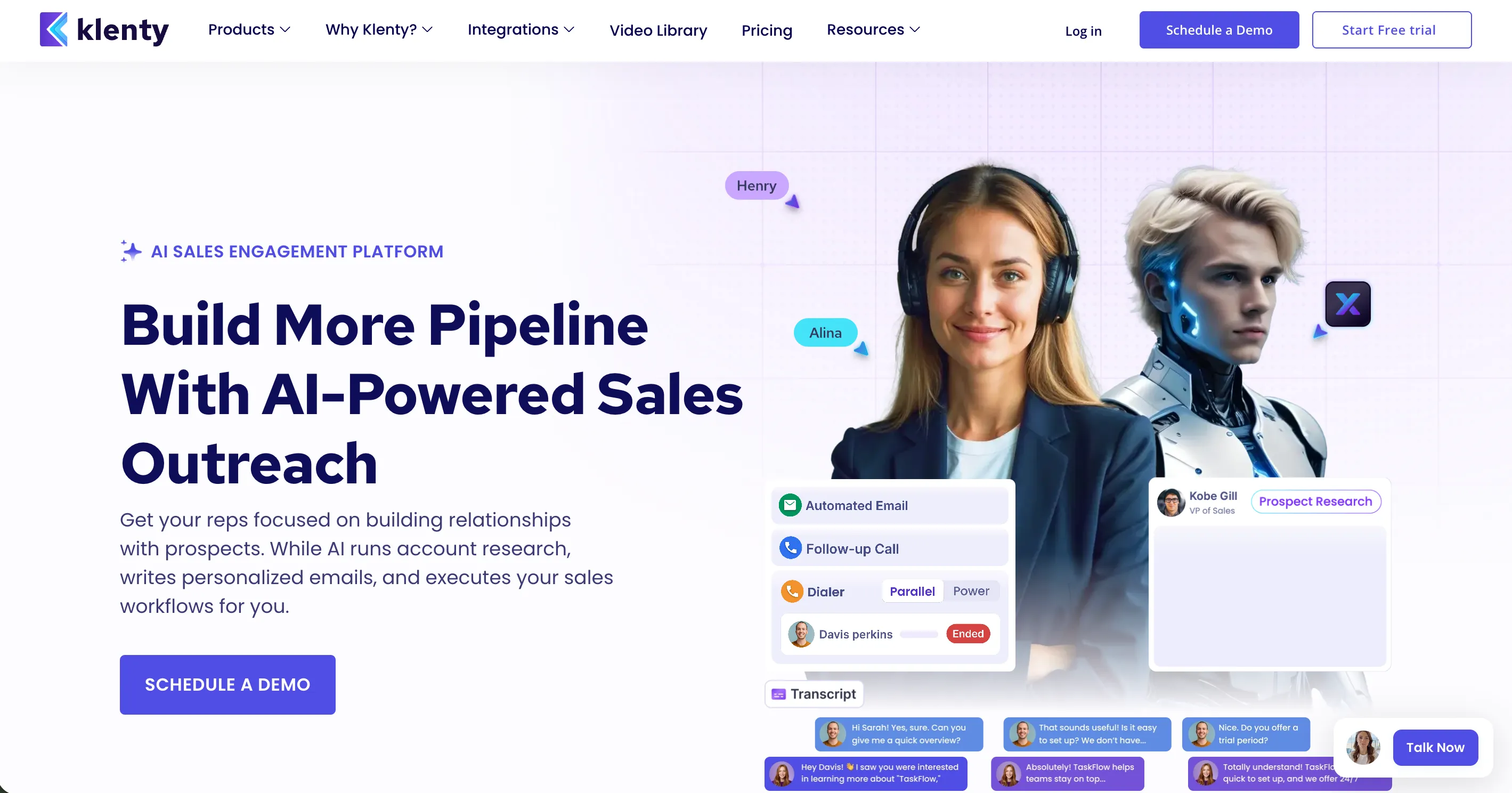
Klenty merges email, phone, SMS, and WhatsApp into one workflow. Its AI assistant, Ask Kai, writes sequence copy based on CRM data and web research. The system includes power and parallel dialers so reps can alternate between calls and digital follow‑ups without switching tools. Real‑time analytics show call volume, reply quality, and cadence performance in one view.
Pros: Strong voice integration, well‑designed analytics, and personalized email generation once profiles are trained. Helps SDR leaders measure output consistently across channels
Cons: Interface complexity for small teams. AI writing quality relies heavily on precise prompts to match buyer's tone.
Best fit: Sales teams running call‑plus‑email prospecting motions that value integrated outreach and detailed reporting.
7. Saleshandy Deliverability‑Focused Cold Email Platform
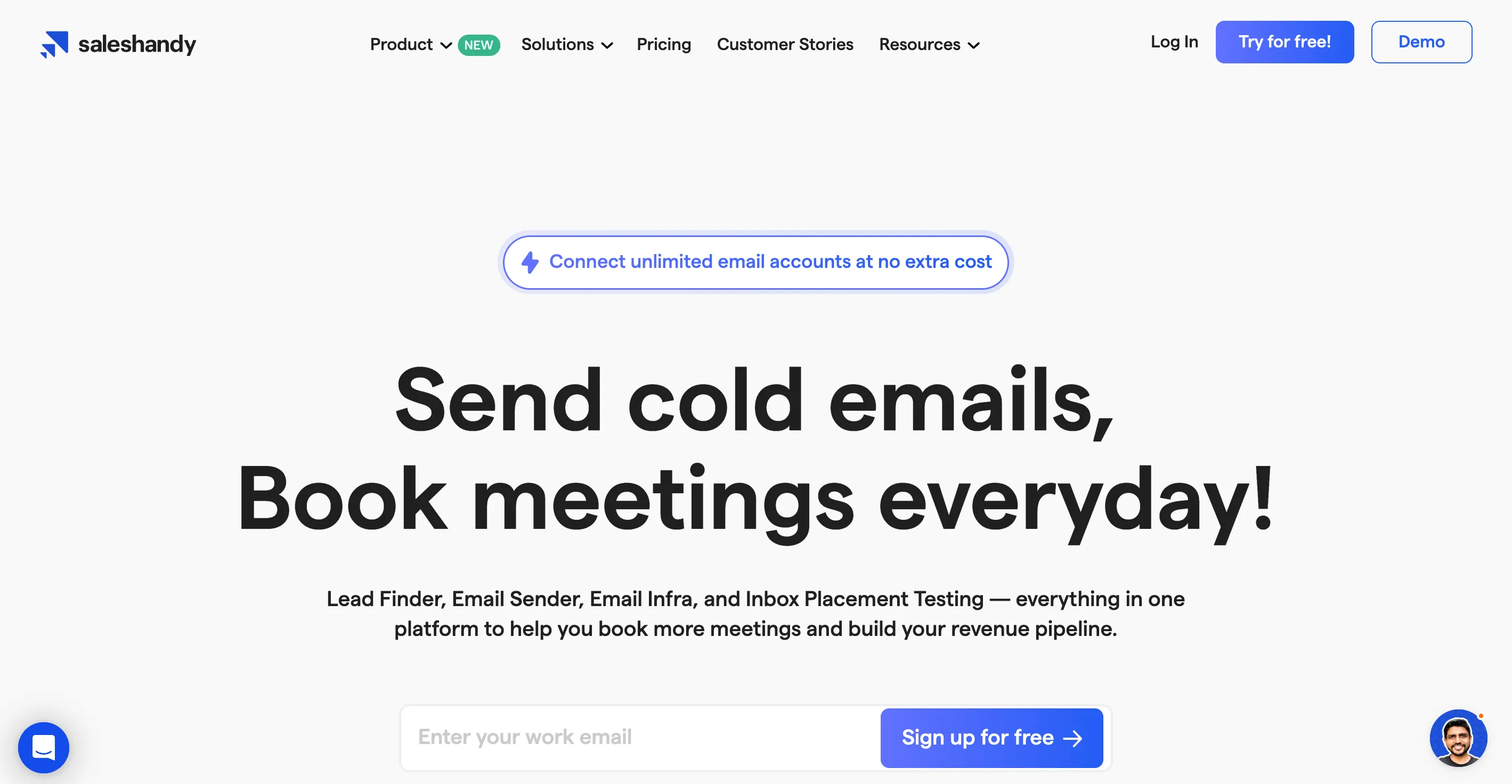
Saleshandy helps teams maintain email deliverability by detecting spam triggers and adjusting language before send. Its AI monitors inbox health in real time, pauses risky accounts, and manages out‑of‑office responses automatically. The system classifies replies into categories such as Interested or Not Interested and reschedules follow‑ups when prospects return from leave. Combined with IP monitoring and rotation, it keeps sender reputation stable during high‑volume sends.
Pros: Exceptional inbox‑placement reliability and easy‑to‑read deliverability diagnostics. Response management automation streamlines SDR workflows.
Cons: Limited to email with minimal personalization and enrichment capabilities.
Best fit: Outbound teams juggling multiple domains that need consistent deliverability and visual visibility into sender health.
8. Lemlist Visual and Multilingual Email Personalization
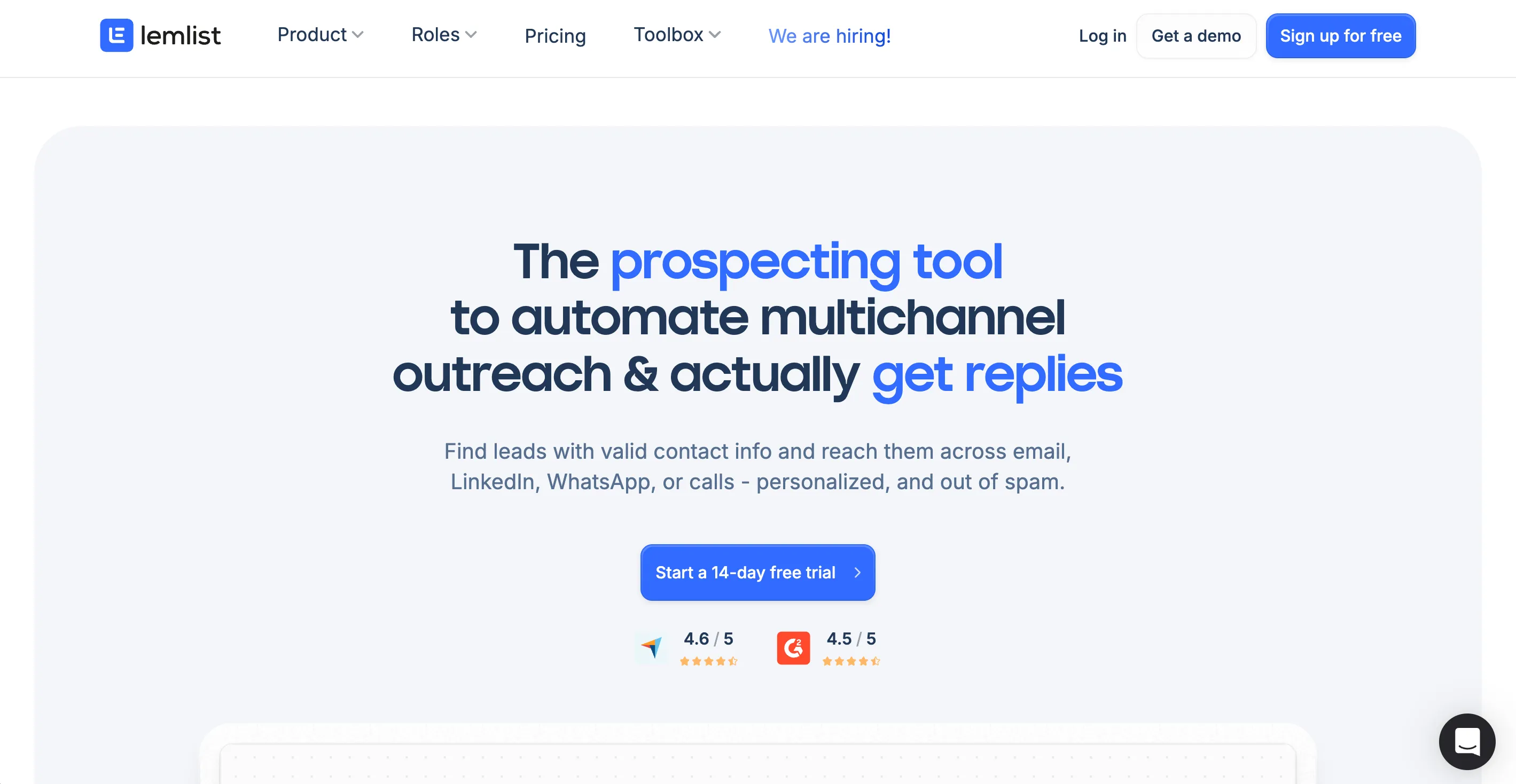
Lemlist focuses on personalization through visual and human elements. Users can embed personalized images, GIFs, or short videos tied to LinkedIn data or CRM fields. AI suggests opening lines referencing recent company milestones or shared interests. With campaign support in eight languages, Lemlist enables localized outreach campaigns across global regions.
Pros: Highly engaging visuals that improve open and reply rates. International language support simplifies global market expansion.
Cons: Daily send limits restrict scale for enterprise campaigns. Data enrichment and behavioral triggers are less advanced.
Best fit: Creative or international sales teams running branded, visually distinctive cold outreach with moderate volume.
9. Apollo.io B2B Database and Outreach Platform
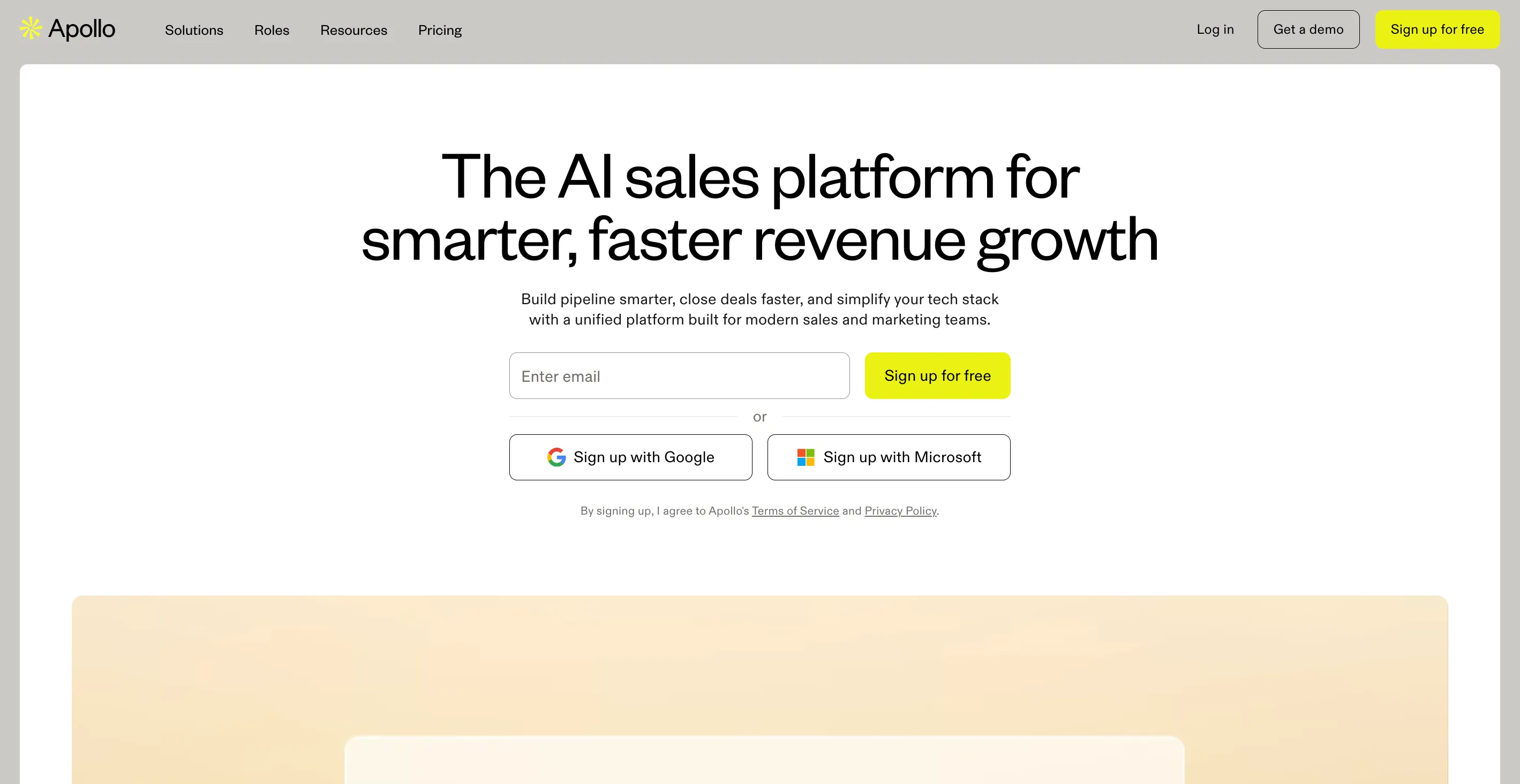
Apollo.io blends a massive contact database with AI personalization features. It houses more than 270 million records enriched by firmographic and technographic data. The AI copy tool generates email templates adjusted for role, industry, and trigger events. Ongoing list verification minimizes bounces and ensures clean delivery. Built‑in spam testing protects domain health, while CRM connections push new contacts or replies directly into workflows.
Pros: Extensive dataset and built‑in enrichment produce accurate outreach lists. Simple integration with CRMs accelerates pipeline creation.
Cons: AI credit restrictions and rule‑based personalization limit flexibility for nuanced messaging.
Best fit: Founders, growth leaders, and small teams needing verified prospect data and basic email automation in one place.
10. Salesloft Structured Outreach and Sales Coaching Platform
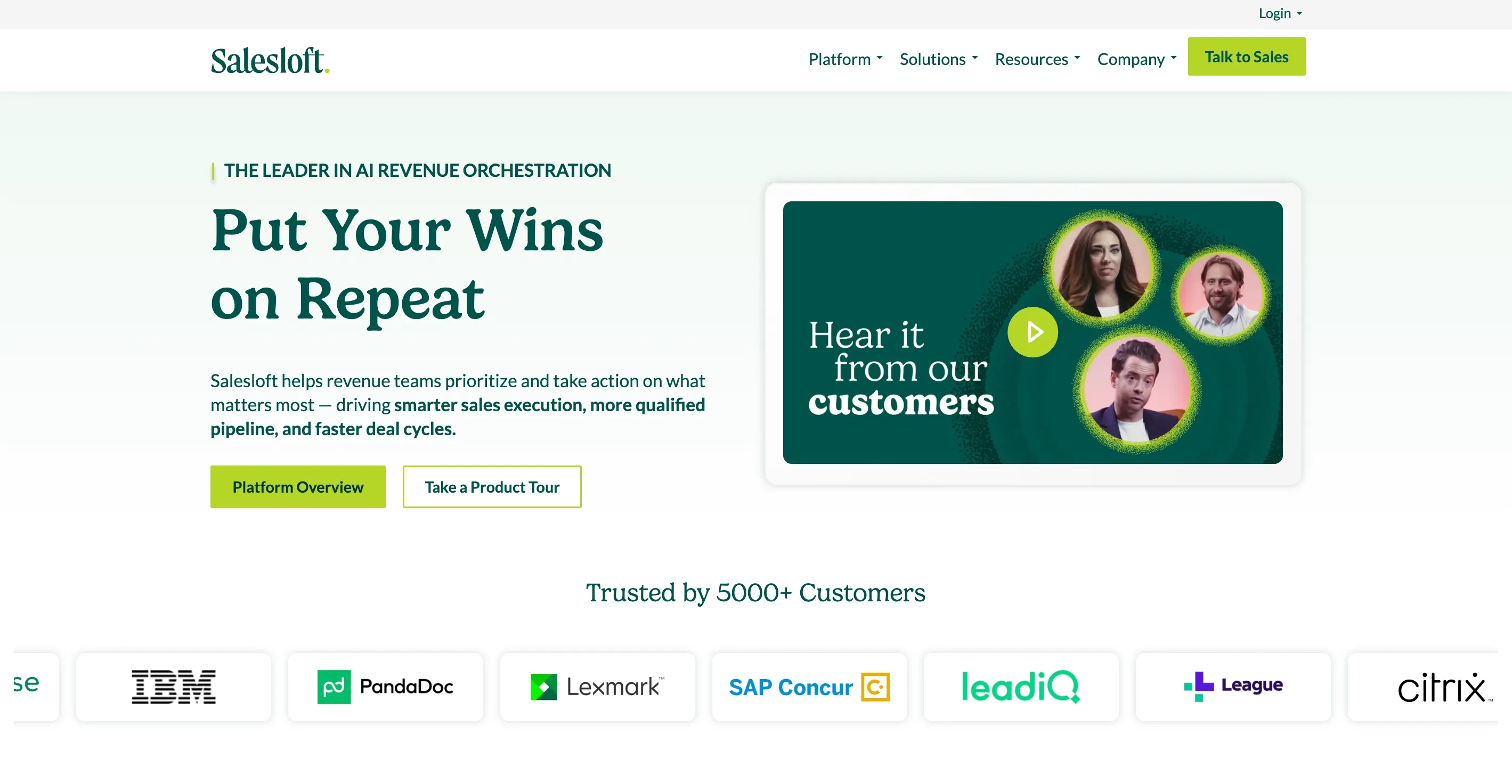
Salesloft focuses on structure and visibility for large sales organizations. It powers cadences across channels, tracking reply sentiment and engagement to surface the best next action for each rep. AI conversation analysis identifies effective messaging patterns from calls and emails. Leadership dashboards combine activity, deal progress, and coaching insights to improve consistency and forecasting accuracy.
Pros: Excellent analytics, coaching insights, and integration with Salesforce and HubSpot. Reliable enterprise security and scale.
Cons: Requires time and technical setup before full adoption. Personalization is rules‑based rather than dynamic.
Best fit: Enterprise‑level SDR teams and RevOps functions prioritizing process consistency, analytics, and performance predictability.
Overcoming Deliverability and Spam Challenges
Effective email outreach depends entirely on deliverability. If emails fail to reach the primary inbox, no amount of personalization can recover performance.
11x solves this challenge using continuous email warmup, inbox rotation, adaptive pacing, and predictive spam classification. It tests every campaign against multiple filters before sending. The system rewrites problematic phrasing, analyzes spintax patterns, and balances domain rotation to maintain sender reputation.
Even as you scale to thousands of Gmail or Outlook sends daily, 11x ensures each campaign remains compliant, authenticated, and ready for high-volume distribution across global markets. Consistent monitoring keeps engagement signals strong and suppresses bounce rates before they harm delivery scores.
Tracking Metrics and Optimizing Campaign Performance
Strong outreach teams run on data, not instinct. Every campaign generates signals, opens, replies, click‑throughs, meetings booked, and the best AI platforms use those signals to learn what works. Instead of relying on static templates, they adjust subject lines, timing, and tone based on real‑world results.
11x captures this feedback automatically and ties it directly to CRM opportunities, showing exactly how each sequence contributes to revenue. Its AI tracks which messages spark responses, which audiences convert fastest, and how engagement patterns shift over time. Those insights feed back into live campaigns, so performance improves with every send.
The result is outreach that keeps getting sharper. For teams looking to move beyond guesswork and turn every campaign into a measurable pipeline driver, 11x gives you the system to make it happen.
Deploy Alice or Julian to run data‑driven outreach that learns, adapts, and converts, turning every send into predictable pipeline growth.





